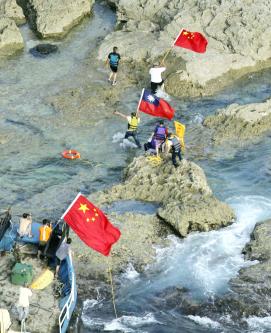Following the latest confrontation over the Diaoyutai Islands (釣魚台) between Japan and pro-China activists, President Ma Ying-jeou’s (馬英九) administration yesterday chastised Japan, while being reserved in its criticism of the activists.
“[Taiwan] calls on Japan to realize there exists a dispute over the sovereignty of the Diaoyutai Islands and to consider [Taiwan]-initiated proposals on how to handle the issue in a pragmatic and effective way. [Japan] should not be oblivious to the fact of contention,” a statement released by the Ministry of Foreign Affairs (MOFA) said last night.














